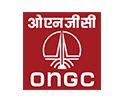India Renewable Energy Market
Source: The Report Cube
Understand The Key Trends Shaping This Market
Download Free SampleIndia Renewable Energy Market Insights & Analysis
The India Renewable Energy Market is anticipated to register a CAGR of around 9.20% during the forecast period, i.e., 2025-32. Also, the market size was valued at nearly USD 47.7 billion in 2032. The industry is one of the most rapidly developing sectors in India primarily due to strong government policies, substantial technical developments, and increasing energy needs owing to the country's improving economy & upscaling population. In an effort to lower carbon emissions & lessen dependency on fossil fuels, India plans to install 500 GW of renewable energy capacity by 2030. Also, with significant investments, regulatory backing, and international cooperation, India is headed toward becoming one of the world's biggest markets for renewable energy. Solar, wind, biomass, and small hydropower make up India's more than 120 GW installed renewable energy capacity as of 2023. Along with this, by 2030, green energy is predicted to be responsible for around half of India's total power capacity, greatly lowering the country's reliance on coal and other fossil fuels.
The term "renewable energy" defines energy produced from naturally occurring sources, such as sunshine, wind, water, and biomass that are continuously renewed. In order to mitigate climate change, decrease greenhouse gas emissions, and move toward a low-carbon, sustainable future, it is essential. It assists in lowering reliance on limited fossil fuel supplies, which are volatile in price & harmful to the environment. Through the utilization of renewable resources, nations can improve energy security & encourage self-sufficiency in supplying their energy requirements. Moreover, traditional fossil fuels have a greater impact on the environment than renewable energy sources. Also, public health is improved & the negative effects of climate change are lessened as they don't release harmful pollutants into the atmosphere or make a substantial contribution to air pollution.
Furthermore, there have been notable developments in renewable energy technologies in recent years, which have reduced costs & improved efficiency. Due to this, renewable energy is now more competitive with fossil fuels, which has resulted to its broad adoption & deployment in a variety of industries, like heating, transportation, and electricity generating. Increasing government backing through the implementation of supporting policies is the primary driver of the Indian market. For example, the Rajasthan government & NTPC Green Energy signed a Memorandum of Understanding (MoU) in 2024 for around 28,500 MW of renewable energy-based projects. These projects are part of nearly 31,825 MW of electricity generation projects valued at about USD 19.18 billion. These programs have drawn funding & created an atmosphere that is conducive to the growth of renewable energy.

Additionally, the market is being greatly influenced by the declining expense of renewable energy technologies, especially wind & solar. Renewable energy is now more competitive with fossil fuels owing to the decreasing costs of wind turbines & solar photovoltaic modules. Besided, the need for renewable energy solutions has upscaled as a result of the Indian government's emphasis on expanding rural electrification and energy access. Also, decentralized renewable energy systems offer a viable & sustainable solution to these regions' energy demands, as they frequently lack dependable grid connectivity. Thus, in the upcoming years, renewable energy is foreseen to play a vital role in economic growth, job creation, and environmental sustainability as the India Renewable Energy Market develops and becomes a pillar of the country's energy policy.
India Renewable Energy Market Dynamics
- Growing Emphasis On Improving India’s Air Quality to Push the Market Expansion
The rising need for renewable energy in India is a result of greater emissions of greenhouse gases. Given to the country’s generous dependence on fossil fuels, air pollution & ecological degradation has been at distressing levels. The necessity of shifting to cleaner & more sustainable energy sources has become more widely accepted as a result of this. Further, to lessen greenhouse gas emissions & combat climate change, renewable energy presents a practical option.
Moreover, when producing electricity by utilizing renewable resources, such as solar, wind, and hydropower, CO2 emissions are considerably reduced, compared to conventional fossil fuel-based power generation. Thus, the deployment of renewable energy is therefore strongly encouraged in India in an effort to lower carbon emissions & enhance air quality. This, in turn. Contributes in driving the India Renewable Energy Market in the future years as well.
- Intermittency & Energy Storage Concerns to Hamper the Industry Progression
Due to their dependence on time & weather, wind & solar power generation generates intermittent output that, if inappropriately managed, might cause system instability. For example, wind power fluctuates as per the weather, whereas solar power generation reduces at night. The concern is exacerbated by the absence of effective & reasonably priced energy storage options. Furthermore, in India, pumped hydro storage, large-scale battery storage, and other technologies are still costly and in their early stages of development. Also, the sustainability objectives of the renewable energy market are undermined when there are insufficient storage solutions available, increasing the need for backup power from traditional sources like coal, further creating a challenge for the India Renewable Energy Market.
India Renewable Energy Market Segment-wise Analysis
By Type:
- Hydroelectric Power
- Solar Energy
- Wind Power
- Bioenergy
- Other
The national market is dominated by Solar Energy and is foreseen to capture the largest market share during 2025-32. India is a prime location for solar energy generation as it receives an abundance of sunlight all year round. The country’s massive solar potential could be utilized to provide its expanding energy requirements. Additionally, substantial spending on solar power projects have been drawn by the plenty of sunlight, which has caused the Solar Energy Market to expand rapidly.
Moreover, the expense of solar energy is becoming more economical with traditional electricity sources in line with the decreasing costs of solar photovoltaic (PV) technology. Also, enhancements in PV technology, incentives from the government, and reducing solar panel costs have made solar energy an opportunistic segment for utility-scale & distributed generation projects.
By End User:
- Residential
- Commercial
- Industrial
- Others
The Industrial sector is envisioned to uphold the largest share of the India Renewable Energy Industry. Owing to the high energy requirements, industrial facilities are regarded as the substantial electricity users across the country. The market companies could diminish their reliance on traditional fossil fuel-based energy & their carbon footprint by using renewable energy sources, such as solar, wind, biomass, or hydropower.
Additionally, to promote the industrial sector's adoption of renewable energy, the Indian government has also implemented numerous laws & incentives. These consist of financial incentives, tax advantages, and renewable purchase obligations (RPOs). Also, demand for the usage of renewable energy is further upsurged by RPOs, which mandate that enterprises obtain a specific proportion of their energy from renewable sources.
What Does Our India Renewable Energy Market Research Study Entail?
- India Renewable Energy Market Research Report highlights the forecast growth rate or CAGR by anticipating the market size & share.
- The market analysis puts light upon the primary industry trends, driving aspects, potential opportunities, growth challenges, and other major factors.
- India Renewable Energy Market Research Report entails details about the most critical shifts in market share in the prominent regions.
- Considering the statistics & the developments by the primary market competitors, our report also strives to demonstrate the most sought-after strategies of the key players.
Table of Contents
- Introduction
- Objective of the study
- Product Definition
- Market Segmentation
- Study Variables
- Research Methodology
- Secondary Data Points
- Companies Interviewed
- Primary Data Points
- Break Down of Primary Interviews
- Secondary Data Points
- Executive Summary
- Market Dynamics
- Drivers
- Challenges
- Opportunity Assessment
- Recent Trends and Developments
- Policy and Regulatory Landscape
- India Renewable Energy Market Overview (2020-2032)
- Market Size, By Value (in USD Billions)
- Market Share, By Type
- Hydroelectric Power
- Solar Energy
- Wind Power
- Bioenergy
- Others
- Market Share, By End Use
- Residential
- Commercial
- Industrial
- Others
- Market Share, By Region
- North
- East
- West
- South
- Central
- Market Share, By Competitors
- Competition Characteristics
- Revenue Shares
- India Hydroelectric Power Renewable Energy Market Overview, 2020-2032F
- By Value (USD Million)
- By End Use- Market Size & Forecast 2019-2030, USD Million
- India Solar Energy Renewable Energy Market Overview, 2020-2032F
- By Value (USD Million)
- By End Use- Market Size & Forecast 2019-2030, USD Million
- India Wind Power Renewable Energy Market Overview, 2020-2032F
- By Value (USD Million)
- By End Use- Market Size & Forecast 2019-2030, USD Million
- India Bioenergy Renewable Energy Market Overview, 2020-2032F
- By Value (USD Million)
- By End Use- Market Size & Forecast 2019-2030, USD Million
- India Others Renewable Energy Market Overview, 2020-2032F
- By Value (USD Million)
- By End Use- Market Size & Forecast 2019-2030, USD Million
- Competitive Outlook (Company Profile - Partila List)
- NTPC
- Company Overview
- Business Segments
- Strategic Alliances/Partnerships
- Recent Developments
- Tata Power
- Company Overview
- Business Segments
- Strategic Alliances/Partnerships
- Recent Developments
- NLC India Limited
- Company Overview
- Business Segments
- Strategic Alliances/Partnerships
- Recent Developments
- JSW Energy
- Company Overview
- Business Segments
- Strategic Alliances/Partnerships
- Recent Developments
- Adani Green
- Company Overview
- Business Segments
- Strategic Alliances/Partnerships
- Recent Developments
- NHPC
- Company Overview
- Business Segments
- Strategic Alliances/Partnerships
- Recent Developments
- JP Power Ventures
- Company Overview
- Business Segments
- Strategic Alliances/Partnerships
- Recent Developments
- SJVN
- Company Overview
- Business Segments
- Strategic Alliances/Partnerships
- Recent Developments
- Waaree Energies
- Company Overview
- Business Segments
- Strategic Alliances/Partnerships
- Recent Developments
- Suzlon
- Company Overview
- Business Segments
- Strategic Alliances/Partnerships
- Recent Developments
- NTPC
- Contact Us & Disclaimer
List of Figure
Figure 1: Market Segmentation of India Renewable Energy Market
Figure 2: Study Variables and Research Methodology Framework
Figure 3: Secondary and Primary Data Collection Process
Figure 4: Break Down of Primary Interviews by Stakeholder Type
Figure 5: India Renewable Energy Market Size, By Value (USD Billion), 2020-2032
Figure 6: Market Share by Renewable Energy Type (Hydroelectric, Solar, Wind, Bioenergy, Others)
Figure 7: Market Share by End Use (Residential, Commercial, Industrial, Others)
Figure 8: Market Share by Region (North, East, West, South, Central)
Figure 9: Competitive Market Share by Key Competitors
Figure 10: India Hydroelectric Power Renewable Energy Market Size (USD Million), 2020-2032F
Figure 11: India Hydroelectric Power Market Size & Forecast by End Use (USD Million), 2019-2030
Figure 12: India Solar Energy Renewable Energy Market Size (USD Million), 2020-2032F
Figure 13: India Solar Energy Market Size & Forecast by End Use (USD Million), 2019-2030
Figure 14: India Wind Power Renewable Energy Market Size (USD Million), 2020-2032F
Figure 15: India Wind Power Market Size & Forecast by End Use (USD Million), 2019-2030
Figure 16: India Bioenergy Renewable Energy Market Size (USD Million), 2020-2032F
Figure 17: India Bioenergy Market Size & Forecast by End Use (USD Million), 2019-2030
Figure 18: India Others Renewable Energy Market Size (USD Million), 2020-2032F
Figure 19: India Others Renewable Energy Market Size & Forecast by End Use (USD Million), 2019-2030
Figure 20: Competitive Landscape Overview (Revenue Shares and Market Positions of Key Players)
Figure 21: NTPC – Business Segments and Strategic Alliances Overview
Figure 22: Tata Power – Business Segments and Strategic Alliances Overview
Figure 23: NLC India Limited – Business Segments and Strategic Alliances Overview
Figure 24: JSW Energy – Business Segments and Strategic Alliances Overview
Figure 25: Adani Green – Business Segments and Strategic Alliances Overview
Figure 26: NHPC – Business Segments and Strategic Alliances Overview
Figure 27: JP Power Ventures – Business Segments and Strategic Alliances Overview
Figure 28: SJVN – Business Segments and Strategic Alliances Overview
Figure 29: Waaree Energies – Business Segments and Strategic Alliances Overview
Figure 30: Suzlon – Business Segments and Strategic Alliances Overview
List of Table
Table 1: Objective of the Study and Research Scope
Table 2: Product Definitions and Specifications
Table 3: Market Segmentation Criteria
Table 4: Study Variables and Definitions
Table 5: Secondary Data Sources and Key Data Points
Table 6: List of Companies Interviewed for Primary Research
Table 7: Primary Data Points and Interview Structure
Table 8: Breakdown of Primary Interviews by Role and Region
Table 9: Market Drivers and Their Impact Analysis
Table 10: Market Challenges and Restraints
Table 11: Opportunity Assessment Summary
Table 12: Recent Trends and Developments Overview
Table 13: Key Policies and Regulatory Framework Affecting the Market
Table 14: India Renewable Energy Market Size by Value (USD Billion), 2020-2032
Table 15: Market Share by Type – Hydroelectric, Solar, Wind, Bioenergy, Others (%)
Table 16: Market Share by End Use – Residential, Commercial, Industrial, Others (%)
Table 17: Market Share by Region – North, East, West, South, Central (%)
Table 18: Market Share by Competitors (%)
Table 19: India Hydroelectric Power Market Overview and Forecast (USD Million)
Table 20: Hydroelectric Power Market Size by End Use (USD Million), 2019-2030
Table 21: India Solar Energy Market Overview and Forecast (USD Million)
Table 22: Solar Energy Market Size by End Use (USD Million), 2019-2030
Table 23: India Wind Power Market Overview and Forecast (USD Million)
Table 24: Wind Power Market Size by End Use (USD Million), 2019-2030
Table 25: India Bioenergy Market Overview and Forecast (USD Million)
Table 26: Bioenergy Market Size by End Use (USD Million), 2019-2030
Table 27: India Others Renewable Energy Market Overview and Forecast (USD Million)
Table 28: Other Renewable Energy Market Size by End Use (USD Million), 2019-2030
Table 29: Competitive Outlook – Company Profiles Summary
Table 30: NTPC – Financial Highlights and Business Segments
Table 31: Tata Power – Financial Highlights and Business Segments
Table 32: NLC India Limited – Financial Highlights and Business Segments
Table 33: JSW Energy – Financial Highlights and Business Segments
Table 34: Adani Green – Financial Highlights and Business Segments
Table 35: NHPC – Financial Highlights and Business Segments
Table 36: JP Power Ventures – Financial Highlights and Business Segments
Table 37: SJVN – Financial Highlights and Business Segments
Table 38: Waaree Energies – Financial Highlights and Business Segments
Table 39: Suzlon – Financial Highlights and Business Segments
Top Key Players & Market Share Outlook
- NTPC
- Tata Power
- NLC India Limited
- JSW Energy
- Adani Green
- NHPC
- JP Power Ventures
- SJVN
- Waaree Energies
- Suzlon
- Others
Frequently Asked Questions








